Like many other women runners in their fifties I hope to be able to continue running into my sixties and seventies. I started running in 2011 at a time of a big surge in the popularity of running, particularly amongst women. I’ve benefited from lots of support and encouragement as I’ve attempted longer distances. In the UK we have become used to seeing women compete at the highest level in distance running, from 10ks to marathons and ultras. In the 2014 Virgin Money London Marathon more than a third of the 35,880 finishers were women.
There has been a huge change in running in the last 30 years. People’s attitudes to women’s participation have been transformed: most people are very surprised when I tell them it was not until 1984 that women were finally allowed to compete at the marathon at the Olympic Games (88 years after the first men’s Olympic marathon). We take women’s participation in marathons for granted but in the Fifties, Sixties and Seventies it was a very different situation.
A woman who’s 65 today was already in her twenties by the time women were permitted to compete in marathons and was 35 by the time Joan Benoit of the US won that first Olympic marathon in Los Angeles. What was it like for women who started running at a time when women were discouraged and excluded from participating in distance running? How did they become runners and what did distance running mean to them?
I’ve recently listened to five interviews with women runners aged over 60. These interviews are from Marathon Talk, a weekly podcast all about running hosted by Martin Yelling and Tom Williams. In February 2014 Marathon Talk interviewed pioneering British marathon runner Joyce Smith.
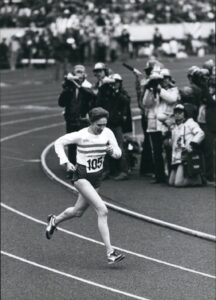
Joyce Smith winning the Second Tokyo International Women’s Marathon in November 1980
Joyce Smith (born 1937) competed as an elite athlete from the 1950s to the 1980s. Her many achievements include the 3000m track world record in 1971; the 1972 international cross country title; reaching the 1972 Olympics 1500m semi-final; winning the first two Tokyo marathons (1979 & 1980) and the first two London marathons (1981 & 1982). At the age of 46 she competed for Great Britain in the first women’s Olympic marathon in 1984. This all seems even more remarkable when you learn that at school the furthest race she was allowed to run was 150 yards and when she began competing in the 1950s the longest distance for women in international track competitions was 800 metres.
The opportunities available to Joyce Smith were limited. There were very few international races open to women in the Sixties. Smith doesn’t come across as someone who campaigned for change but she did find herself forced to push for better support at club level. She describes how she left her club Barnet & District AC to set up a separate club for women, Barnet Ladies:
“As a ladies section we found we weren’t doing very well and not getting a lot of encouragement so we broke away.”
Her husband, Bryan Smith, was also her coach, and the support he gave her was very important in enabling her to continue her athletics career. She says of athletics “it’s always been our life”.
Joyce Smith was already in her forties when she ran her first marathon in 1979, setting a new British record. When she won the London Marathon for the second time in 2:29:43, Smith again set a new British record, and became the oldest woman to win the race at 44 years, 195 days, a record which still stands. Unsurprisingly she doesn’t think that she fulfilled her marathon potential:
“Looking back I wish I’d been able to run marathons when I was in my thirties. What would I have achieved? We’ll never know. I was just unfortunately a little bit before my time perhaps.”
Joyce Smith’s exceptional achievement was that she continued running into her forties and made the most of the opportunities that became available to her as women’s distance running developed. These new opportunities motivated her to keep competing and extended her career as an elite athlete.
“Because the events slowly came in I just moved up a step each time and it was a new event, a new achievement. There was always something new to do….New horizons kept opening up.”
She was one of a relatively small group of women who competed at new distances and paved the way for all the women distance runners who were to follow. In doing this she quietly challenged perceptions of what women were capable of, showing all of us that gender, age and motherhood are no barriers to achievement in sport.
Joyce Smith carried on running into her seventies, only stopping in 2012 because she found she “didn’t enjoy running so slowly”. She continues to keep fit and to support athletics at her club. She is also an Independent Trustee of the London Marathon Charitable Trust. Joyce Smith received an MBE in 1984 for services to sport.
………………………………………………………………
Read about the London Avon International Marathon in August 1980 which Joyce Smith competed in.
I’ve written a post (“It’s that mum again!” – marathons, motherhood and age) comparing how Joyce Smith was described by the media with how Keira D’Amato of the USA has been described in 2021/22.
(Additional information from Wikipedia; photographs courtesy of Virgin Money London Marathon and Alamy.)
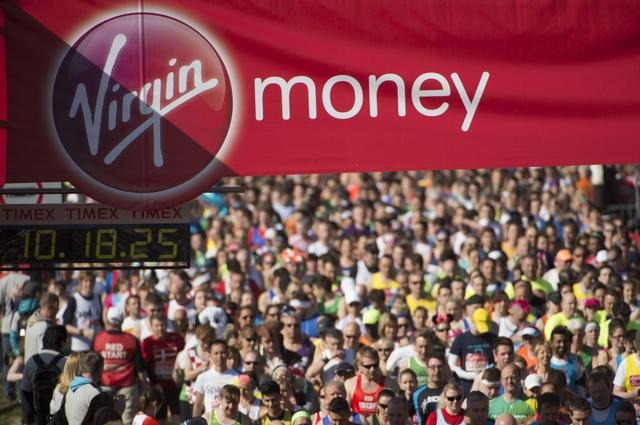
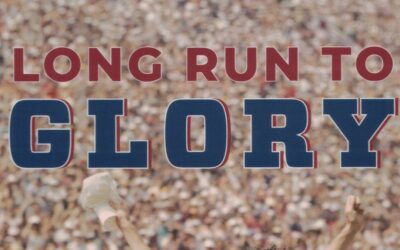
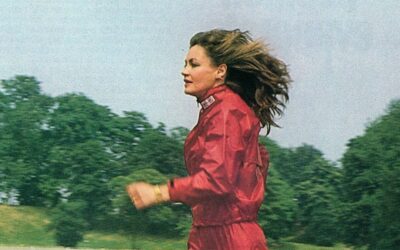
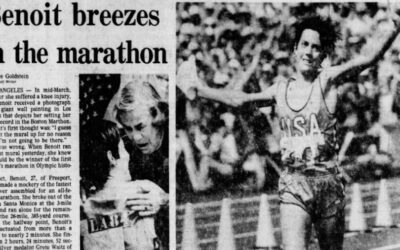
As a contemporary athlete and admirer of Joyce Smith going back to the late 1950s (when she was Joyce Byatt), I can still recall what a role model she was – for male as well as female runners. Such ability, competitiveness, consistency, versatility, and longevity (plus the convenience of in-family coaching) – and in an era when running in the UK was a man’s world. Had Joyce been able to graduate to the marathon after, say, the Munich Olympics in 1972, she would surely have been capable of 2h 22m, maybe even 2:20. As it was, she had a stellar domestic career on track, road and country before achieving an astonishing and exhilarating twilight flourish over 26 miles. I can emphasise with Joyce having given up exercising at 75 because it was no fun to run slowly: sadly I’ve decided to follow suit at year’s end when I turn 78. But didn’t athletes of our generation have a blast while it lasted!
Gavin, thank you for your insight into Joyce Smith’s career. It is good to learn what an inspiration she was for her contemporaries. I got the impression from the interview that her husband’s support (and coaching) and their shared dedication to athletics was one of the things which enabled her to compete in a man’s world. Glad to hear you had a blast!
Katie